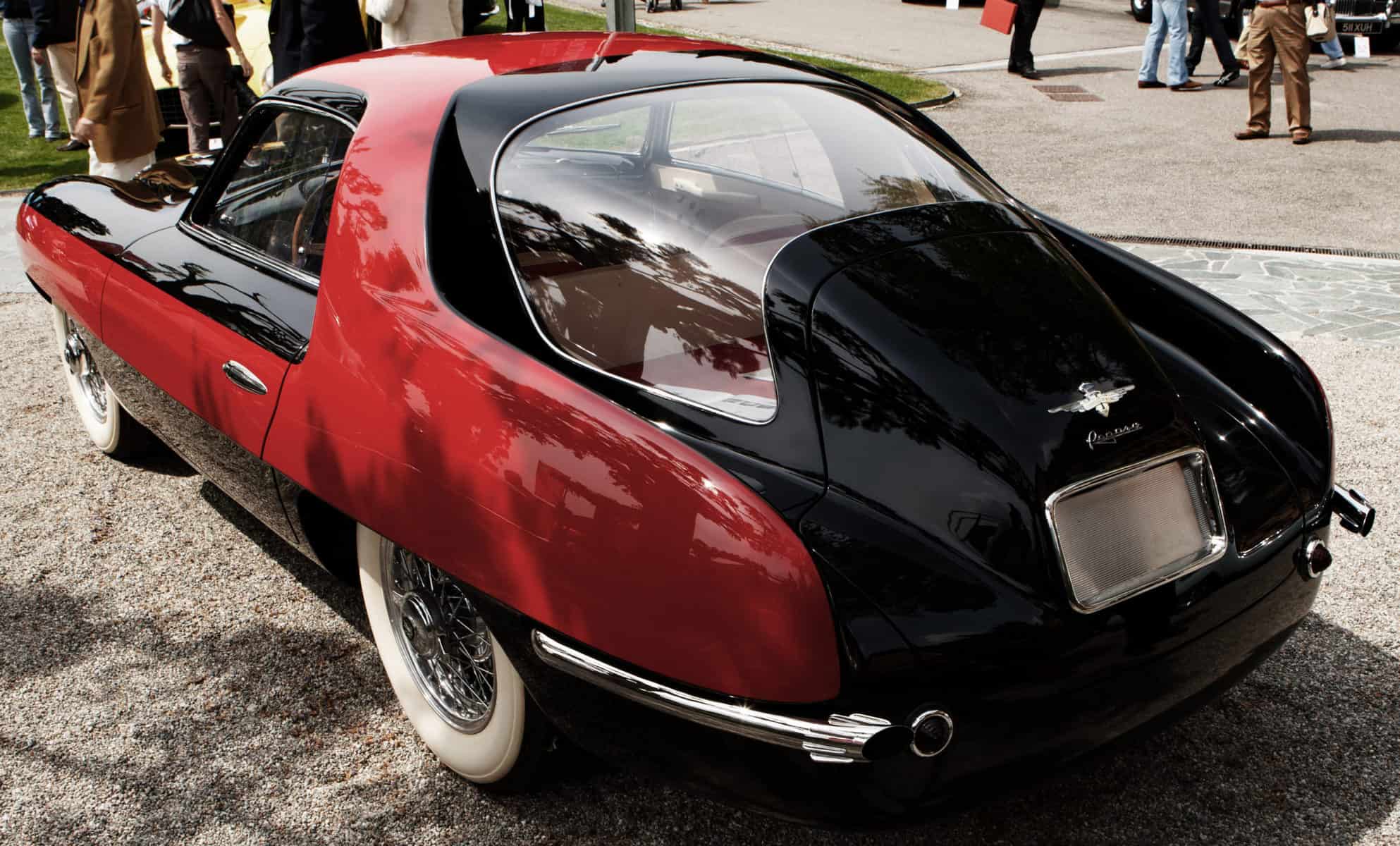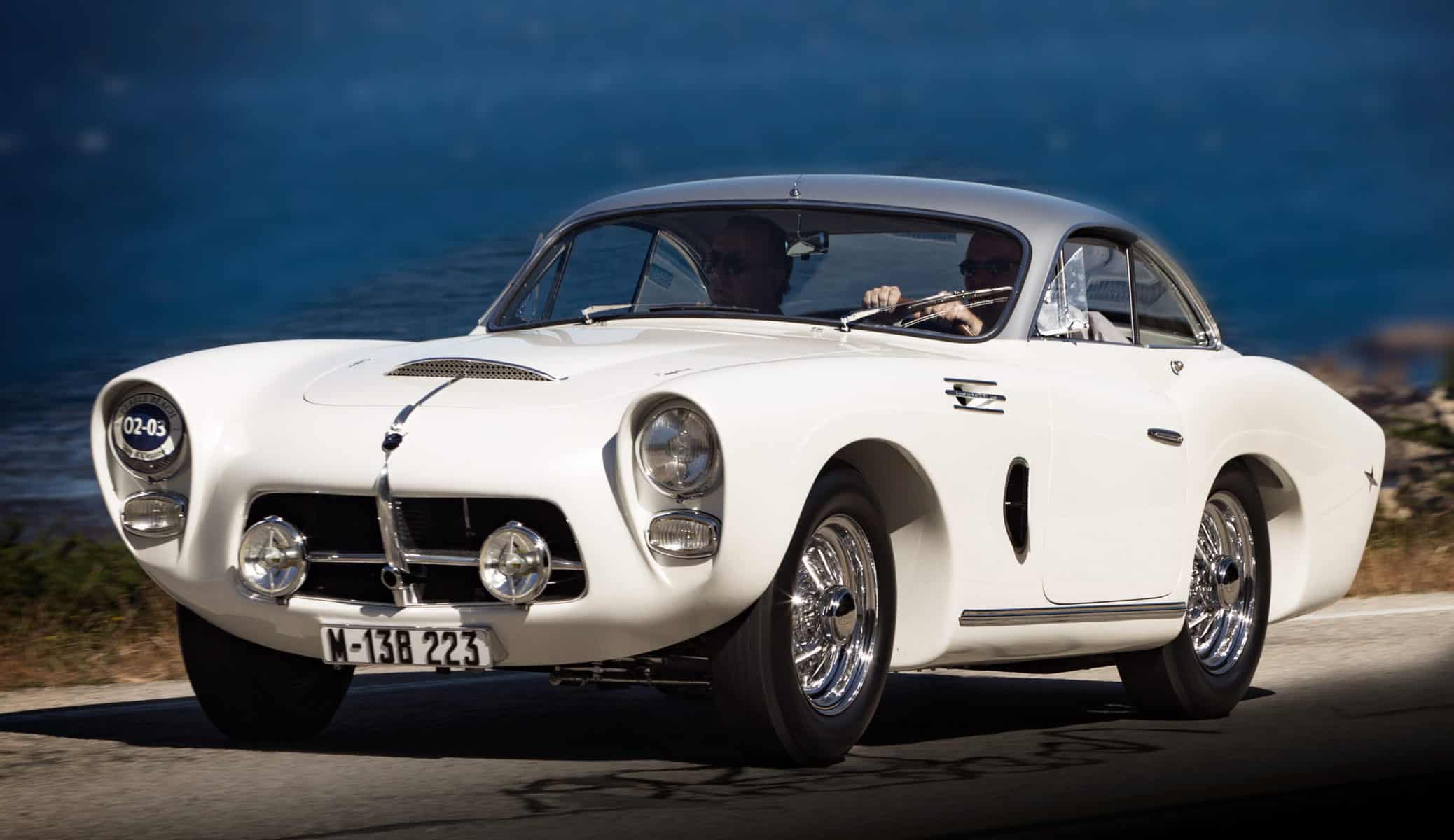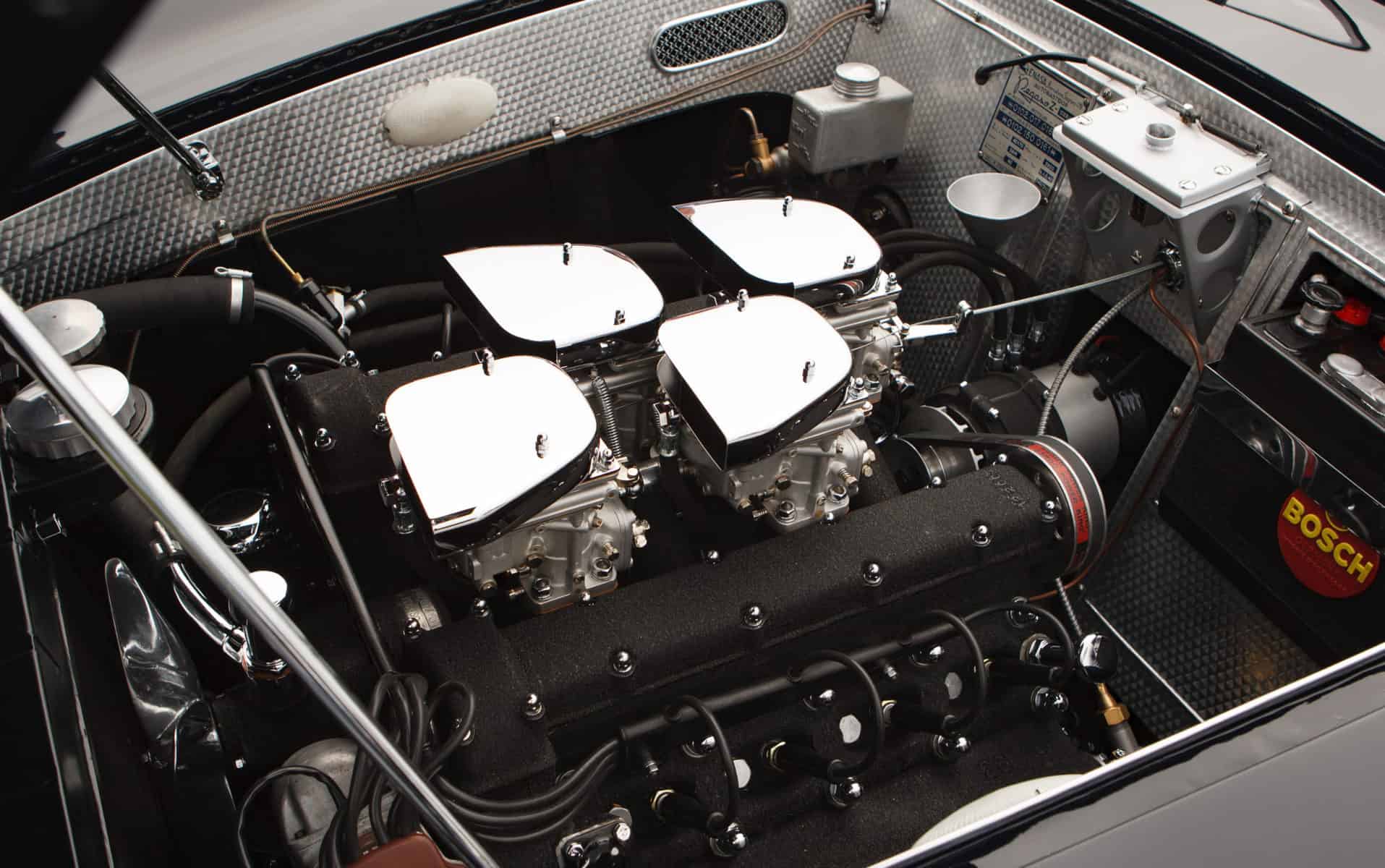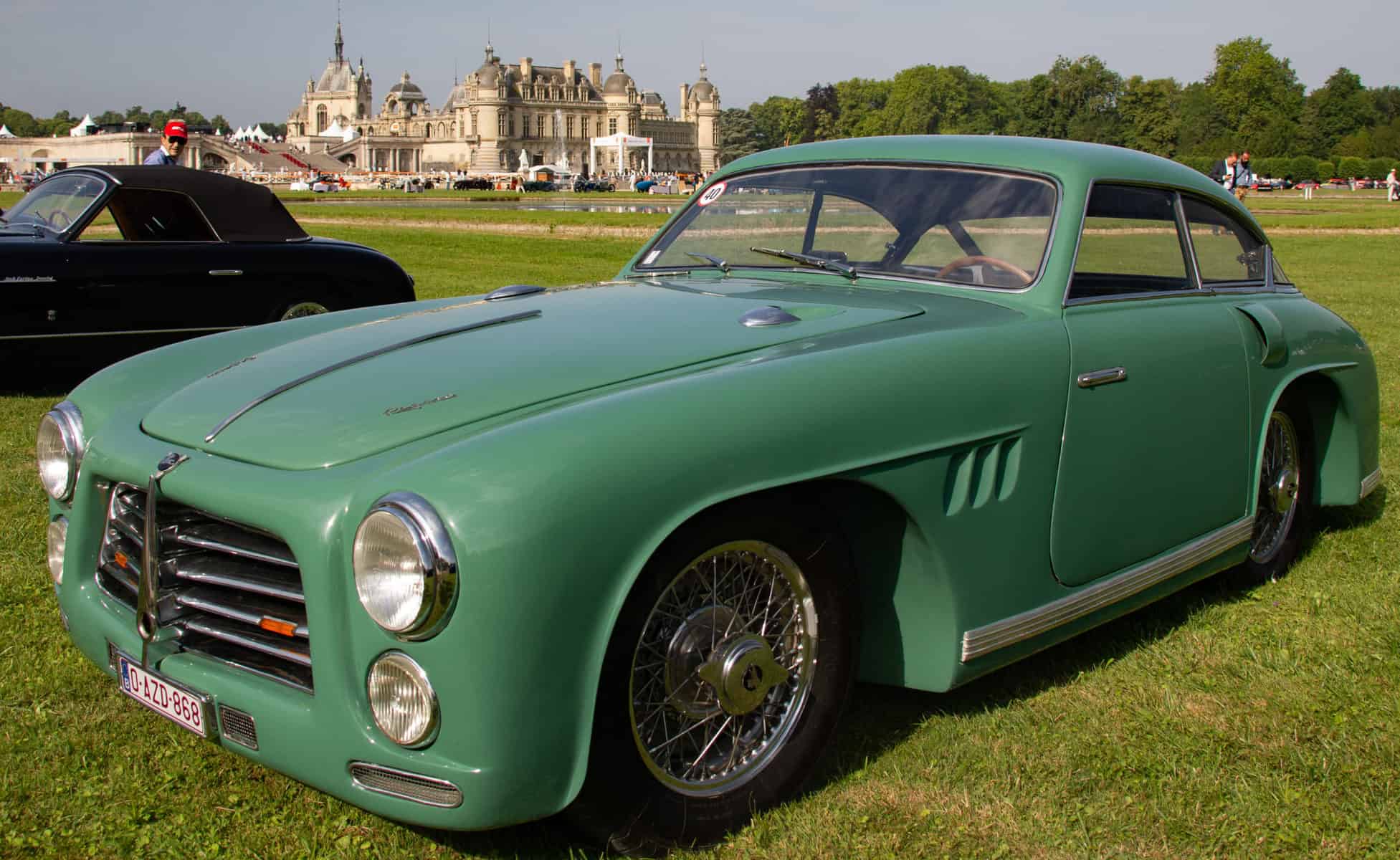Pegaso Z-102
The “Spanish Ferrari” rides again
BY: WOUTER MELISSEN
After the Second World War, most luxury and sports-car manufacturers were scraping to get by. That was of no concern to the Spanish government, who were keen to show off the country’s capabilities.
To this end, the state acquired the old Hispano Suiza factory in Barcelona and created a new manufacturing facility (ENASA) and a technical school (CETA). While ENASA started off producing trucks, chief engineer Wilfredo Ricart and his young staff also commenced with the development of a brand-new sports car. Dubbed the Pegaso Z-102, it was one of the most sophisticated and complicated production cars of the early 1950s.
Ricart was no stranger to the industry, as he briefly spent time working for Hispano Suiza during the late 1910s before creating his first car in the early 1920s. This was a small voiturette racer powered by an advanced four-cylinder engine with two overhead camshafts and four valves per cylinder. At the 1926 Paris Motor Show, he revealed a road car, but, due to financial difficulties, the production plans never materialized. In 1936, Ricart joined Alfa Romeo as the chief engineer for special projects. Working with the likes of legendary engineer Vittorio Jano and Enzo Ferrari, he finally had the means to turn his ideas into reality. Among his last projects was the mid-engined Tipo 512 Grand Prix car, powered by a supercharged, 1.5-liter flat-12 that was sadly never raced.
Once the hostilities were over, Ricart returned to his native Barcelona and was actually due to join Studebaker in the United States before the opportunity to head ENASA opened up. The lure of designing and building vehicles in Spain prompted Ricart to abandon his plans to move across the Atlantic. He was tasked to create a full range of machines that would not only include sports cars and trucks but also the creation of a trolley bus. Each project was numbered; the cars would be part of the Z-100 series, the trucks started with Z-200, while the trolleybus was, for example, known as the Z-501. The “Z” in the type names was a phonetic reference to the CETA technical school. For the brand name, Ricart found inspiration in the mythical flying horse Pegasus, which was known as Pegaso in Spain.
The first motor car that was developed was a luxury four-door saloon that could be used as the company car by government officials. Dubbed the Z-101, it was to be powered by a mighty 4.5-liter V12 engine. Eventually, the project was set aside in favor of an even higher profile project: a two-door sports car. In keeping with the company’s naming policy, this second project was dubbed the Z-102. It was directly targeted at Ricart’s former employee Alfa Romeo and the newly established company Ferrari. This was particularly poignant as Enzo Ferrari had famously blamed Ricart for his dismissal from Alfa Romeo in 1937. It must have sparked his interest that his old co-worker was in the process of creating a rival machine that sported a flying horse on the nose.

Considering Ricart’s previous projects, it was no surprise that the Z-102 was effectively a racing car for the road. The beating heart of the new Pegaso was an all-aluminum, 2.5-liter V8. Like a racing engine, it featured dry-sump lubrication, twin overhead camshafts, and hemispherical combustion chambers. In its most modest trim, it was fitted with a single Weber carburetor but still produced 165 hp. Ricart left a lot of development room when he designed the V8 engine. The first upgrades were the installation of a pair of four-barrel carburetors or setup with four two-barrel carburetors. There was also enough “meat on the bones” of the dry-sump engine to create 2.8- and 3.2-liter versions of the V8. For competition use, a supercharger was fitted to the 3.2-liter unit, which saw the power increase to nearly 300 hp.
The sophisticated engine was mounted in a steel platform chassis that was extensively drilled for lightness. The front suspension was through double wishbones with conventional hydraulic shock absorbers. Instead of using the more conventional leaf or coil springs, Ricart resorted to torsion bars just like he had done with the un-raced Tipo 512 Alfa Romeo Grand Prix machine. The rear end consisted of a DeDion axle that was also normally found on racing cars only. Another interesting feature was the five-speed gearbox that was not bolted to the engine but mounted in unit with the final drive. This “transaxle” layout moved a little more weight from [delete] the nose to the back of the car to improve the balance. Stopping power was provided by hydraulically assisted drum brakes on all four corners.
The Pegaso Z-102 broke cover at the 1951 Paris Motor Show where two examples were on display. The beautiful, competition-inspired mechanicals were hidden from sight by rather ungainly coupe and convertible bodies that had also been produced in-house. These designs looked cumbersome and too large for the chassis underneath. Like the chassis, the bodywork was constructed from steel, so the ENASA bodies were not only too big, they were also too heavy. It was a shame that the first impression of the all-new Pegaso was somewhat muddled, as the car was well ahead of its rivals in terms of it chassis and engine design. The Z-102 was reportedly the fastest road car in the world when it entered production.
The idea of an all-Spanish car was quickly abandoned and help was called in from specialist coach builders like Touring and Saoutchik. The Italian company provided both fixed head Berlinetta and open Spider bodywork that was considerably more compact than the standard designs. It was also considerably lighter, courtesy of Touring’s patented Superleggera
For those customers who wanted designs that were more flamboyant than the understated Touring coachwork, Paris-based Saoutchik was the carrossier of choice. Not known for his subtle creations, Jacque Saoutchik also offered closed and open bodywork for the Pegaso chassis. The coupes were particularly spectacular, with prominent headlights, exuberant chrome trim, and more often than not a striking two-tone finish. One of the Saoutchik Coupes was upholstered with leopard skin and boasted gold controls. The Spiders featured many of the same design cues but with a cut-down windshield that only had small A-pillars.
Perhaps the most famous of all creations on the Pegaso chassis is the Cupula, or dome coupe, created in-house. The nickname was derived from the dome-shaped rear window. The design had been penned by CETA students, who had been tasked to imagine what a car would look like thirty years down the road. It also featured partly enclosed wheels, a domed engine cover, and side exhausts. The Cupula was impossible to miss at its 1953 New York Auto Show debut, courtesy of the yellow finish and the red sidewalls on the tires. It was subsequently sold to President Trujillo of the Dominican Republic. This is where it earned its second nickname El Dominicano.
The Z-102 made its competition debut at the 1952 Monaco Grand Prix, which was run for sports cars that year. It was a disaster, as neither Z-102 entered started the race in which Ferraris finished first through fifth. The following year a pair of Touring Spiders lined up for Le Mans but after a heavy accident early in the race with one of the cars, the other example was withdrawn. In 1954, a Pegaso proved competitive in the Carrera Panemericana until another accident eliminated the Z-102 from the race. The biggest competitive achievement of a Pegaso came at Jabbeke in September of 1953. A road car equipped with a supercharged, 2.8-liter engine set a new production speed record, averaging just over 151 mph.
Production of the Z-102 lasted from 1951 through1958. The Pegaso had proven achingly expensive to produce and as a result difficult to sell. It is estimated that just eighty-four examples had been produced before the Spanish government pulled the plug on the Z-102. Ricart tried to salvage the project by developing the more cost-efficient Z-103, which was powered by a less-complicated V8 engine. It proved to be too little too late and only three Z-103s were built before ENASA reverted back to building utilitarian vehicles only.
The Pegaso Z-102 was already special when it was brand new, so almost all that were sold to private customers have survived. A mechanical work of art, the Z-102 is a sight to behold but also a nightmare to work on. The engine, for example, was squeezed so tightly in the chassis that even for a simple valve adjustment the complete engine has to be taken out of the car. One restorer once explained that a full restoration of a Z-102 is about twice as expensive as that of a Ferrari of the same period.









